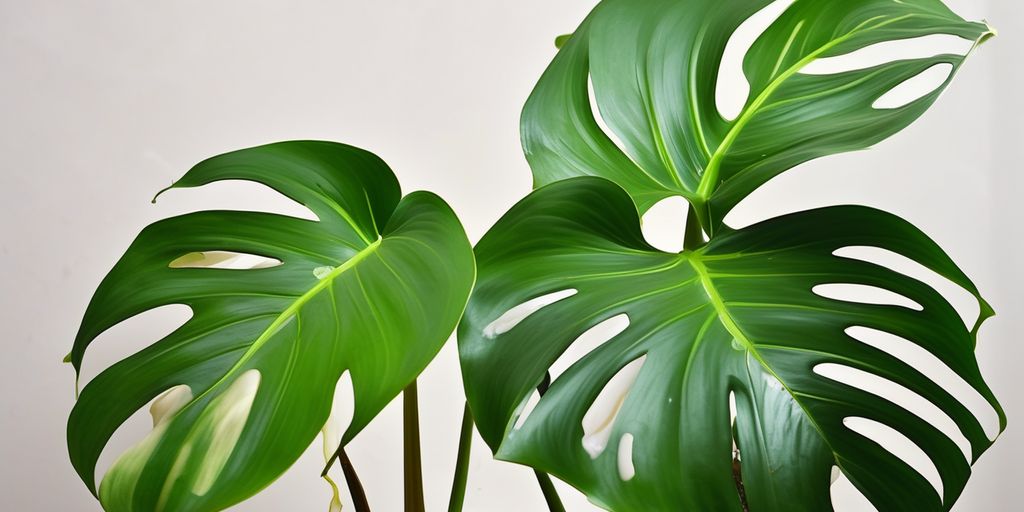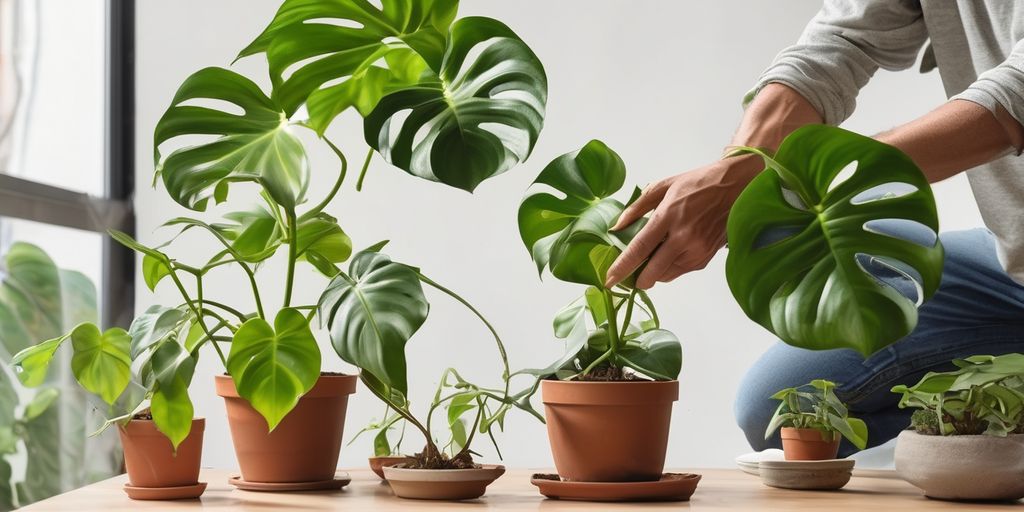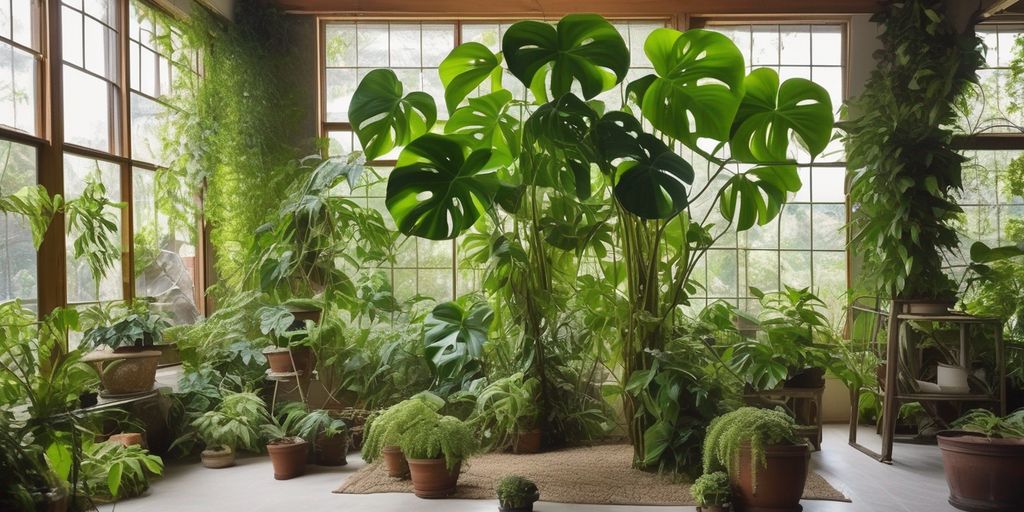The White Wizard Philodendron, with its mystical name and striking appearance, has captivated the hearts of plant enthusiasts around the world. This article delves into the unique characteristics and care requirements of this enchanting plant, exploring its aesthetics, growth conditions, and cultural significance. Whether you are a seasoned gardener or a novice looking to add a touch of magic to your green collection, understanding the nuances of the White Wizard Philodendron will enhance your appreciation and success in cultivating this extraordinary variety.
Contents
- 1 The Enchanting Aesthetics of the White Wizard Philodendron
- 2 Ideal Growing Conditions for the White Wizard
- 3 Propagation Techniques for the White Wizard Philodendron
- 4 Common Challenges in Caring for the White Wizard
- 5 Design and Decor Applications
- 6 Historical and Cultural Significance
- 7 Conservation and Sustainability Efforts
- 8 Comparative Analysis with Other Philodendron Varieties
- 9 Conclusion
- 10 Frequently Asked Questions
- 10.1 What makes the White Wizard Philodendron unique compared to other philodendron varieties?
- 10.2 How often should I water my White Wizard Philodendron?
- 10.3 What are the ideal light conditions for growing a White Wizard Philodendron?
- 10.4 Can the White Wizard Philodendron be propagated easily?
- 10.5 What common pests affect the White Wizard Philodendron?
- 10.6 How can I integrate the White Wizard Philodendron into my home decor?
Key Takeaways
- Discover the unique leaf patterns and coloration that make the White Wizard Philodendron a standout plant.
- Learn the ideal light, water, and temperature conditions to ensure healthy growth.
- Explore effective propagation methods like stem cuttings, layering, and seed germination.
- Understand the common challenges such as pests, diseases, and nutrient deficiencies, and how to manage them.
- Gain insight into the historical significance, decorative uses, and conservation efforts surrounding the White Wizard Philodendron.
The Enchanting Aesthetics of the White Wizard Philodendron
Striking Leaf Patterns
The White Wizard Philodendron is renowned for its striking leaf patterns, which feature large, glossy leaves with bold variegation. The dramatic contrast between the deep greens and the pure whites make each leaf a natural artwork.
Unique Coloration
This plant’s unique coloration sets it apart from other philodendrons. The splashes of white and cream against a dark green backdrop are not only rare but also highly sought after by plant enthusiasts.
Growth Habit
The growth habit of the White Wizard Philodendron is both upright and sprawling, allowing it to adapt well to both pots and larger indoor spaces. Its ability to grow relatively fast under the right conditions makes it a popular choice for indoor gardeners looking to make a bold statement.
Ideal Growing Conditions for the White Wizard
Light Requirements
The White Wizard Philodendron thrives in bright, indirect light. Avoid direct sunlight, as it can scorch the leaves, diminishing their vibrant patterns. A north-facing window or a spot that receives filtered light is ideal.
Watering Needs
This plant prefers consistently moist soil but is susceptible to overwatering. Allow the top inch of soil to dry out before watering again. Use a well-draining potting mix to prevent waterlogging, which can lead to root rot.
Temperature and Humidity
The White Wizard enjoys a warm and humid environment, typical of its tropical origins. Maintain indoor temperatures between 65°F to 80°F and humidity levels around 60-80%. Consider using a humidifier or placing a water tray near the plant to boost humidity. Misting the leaves can also help, but do so sparingly to avoid pest issues.
Propagation Techniques for the White Wizard Philodendron
Stem Cuttings
Stem cuttings are the most popular method for propagating the White Wizard Philodendron. Select a healthy stem with at least two nodes, and cut just below a node using a clean, sharp knife. Place the cutting in water or moist soil, ensuring that at least one node is submerged. Roots typically develop within a few weeks.
Layering
Layering involves encouraging roots to form on a part of the plant while it is still attached to the parent plant. Gently wound the stem and apply a rooting hormone. Secure the wounded part with moist sphagnum moss and cover it with plastic to retain moisture. Roots should form in 4 to 6 weeks, after which the new plant can be separated.
Seed Germination
Germinating seeds of the White Wizard Philodendron can be challenging but rewarding. Plant the seeds in a well-draining soil mix, lightly covering them with soil. Keep the soil consistently moist and in a warm environment. Germination can take several weeks, and it’s crucial to maintain humidity and temperature control during this period.
Common Challenges in Caring for the White Wizard
Pest Problems
The White Wizard Philodendron, while robust, is susceptible to infestations by aphids, mealybugs, and spider mites. Regular inspection and prompt treatment with insecticidal soap or neem oil can help manage these pests effectively. Early detection is crucial to prevent widespread damage.
Disease Management
This plant can suffer from root rot and leaf spot diseases, particularly when overwatered or in poorly draining soil. Ensuring proper drainage and avoiding overhead watering are key preventive measures. Use of fungicides might be necessary if infections are severe.
Nutrient Deficiencies
The White Wizard may exhibit signs of nutrient deficiencies, such as yellowing leaves or stunted growth, if not fertilized properly. A balanced, slow-release fertilizer applied during the growing season can correct these issues. It’s important to follow the recommended dosage to avoid over-fertilization, which can harm the plant.
Design and Decor Applications
Indoor Plant Arrangements
The White Wizard Philodendron, with its striking foliage, can be a centerpiece in any room. Incorporate it into mixed plant arrangements to enhance the visual appeal and create a vibrant, green space. Consider varying the heights and textures of surrounding plants to complement its unique features.
Landscape Integration
Integrating the White Wizard into outdoor gardens can transform spaces with its tropical flair. It thrives under the canopy of larger trees, providing a lush, understory layer. This plant is perfect for adding structure and color to shaded garden spots.
Thematic Decorations
This plant is not just a decorative element but also a theme enhancer for events and spaces. Use the White Wizard Philodendron to bring a sense of nature and tranquility to urban environments. Its dramatic leaves can be used to create natural backdrops or centerpieces that evoke a serene and inviting atmosphere.
Historical and Cultural Significance
Origins and Discovery
The White Wizard Philodendron was first discovered in the tropical rainforests of South America. Its discovery by Western botanists in the late 19th century marked a significant addition to the exotic plant collections that were popular in Europe at the time.
Symbolic Meanings
In many cultures, the White Wizard Philodendron is seen as a symbol of health and prosperity. Its robust nature and striking appearance make it a popular choice for gifts and decorative purposes in various cultural ceremonies.
Popularity Trends
The popularity of the White Wizard Philodendron has seen a significant resurgence in recent years. This trend is largely driven by its aesthetic appeal and its adaptability as a houseplant. The plant’s ability to purify the air has also made it a favorite among indoor plant enthusiasts.
Conservation and Sustainability Efforts
Environmental Impact
The White Wizard Philodendron, while enchanting, has a significant environmental impact due to its popularity and the demand for rare plants. Efforts to cultivate this plant sustainably are crucial to prevent habitat destruction and illegal trade.
Conservation Programs
Numerous conservation programs are in place to protect the natural habitats of the White Wizard Philodendron. These programs focus on sustainable cultivation practices and educating plant enthusiasts about the importance of ethical plant collection.
Sustainable Gardening Practices
- Use of organic fertilizers
- Implementation of water-efficient irrigation systems
- Encouragement of local sourcing to reduce transportation emissions
Sustainable gardening practices not only support the health of the White Wizard Philodendron but also contribute to the overall well-being of our planet.
Comparative Analysis with Other Philodendron Varieties
Similarities and Differences
The White Wizard Philodendron shares many traits with its relatives, such as the Philodendron Brasil and Philodendron Birkin. However, its striking white variegation sets it apart, offering a unique aesthetic appeal. All these varieties thrive under similar conditions but differ in leaf shape and growth patterns.
Care Comparisons
Care requirements for the White Wizard are notably more demanding than some other philodendrons. This variety requires more precise humidity and temperature control to maintain its vibrant leaf coloration. Here’s a quick comparison:
- White Wizard: High humidity, stable temperatures
- Philodendron Brasil: Moderate humidity, adaptable to fluctuating temperatures
- Philodendron Birkin: Low humidity, tolerant to cooler temperatures
Visual Distinctions
The visual appeal of the White Wizard is unmatched in the Philodendron family. Its large, glossy leaves with bold white variegation contrast sharply with the more uniformly green leaves of varieties like the Philodendron Xanadu. This distinct appearance makes it a favorite among plant enthusiasts and decorators alike.
Conclusion
In conclusion, the White Wizard Philodendron is not just a plant, but a captivating addition to any indoor garden. Its striking white and green foliage, ease of care, and air-purifying qualities make it a favorite among plant enthusiasts. Whether you are a seasoned gardener or a novice looking to green your space, the White Wizard Philodendron offers both aesthetic beauty and practical benefits. Embracing this magical charm can transform your home or office into a more vibrant and enchanting environment.
Frequently Asked Questions
What makes the White Wizard Philodendron unique compared to other philodendron varieties?
The White Wizard Philodendron stands out due to its striking white and green variegated leaves, which are larger and more defined than many other philodendron species. Its rapid growth and distinctive leaf patterns make it a popular choice among plant enthusiasts.
How often should I water my White Wizard Philodendron?
Water your White Wizard Philodendron when the top inch of soil feels dry. Over-watering can lead to root rot, so ensure the pot has good drainage and the soil is not consistently soggy.
What are the ideal light conditions for growing a White Wizard Philodendron?
This plant thrives in bright, indirect light. Avoid direct sunlight as it can scorch the leaves. A spot near a window with a sheer curtain is ideal for filtering light.
Can the White Wizard Philodendron be propagated easily?
Yes, the White Wizard Philodendron can be propagated through stem cuttings, layering, or seed germination. Stem cuttings are the most common and effective method, providing new plants that mirror the parent plant’s characteristics.
What common pests affect the White Wizard Philodendron?
Common pests include spider mites, mealybugs, and aphids. Regularly inspect your plant for signs of infestation and treat it with neem oil or insecticidal soap as needed.
How can I integrate the White Wizard Philodendron into my home decor?
The White Wizard Philodendron can be used as a statement piece in living rooms, offices, or large open spaces. It pairs well with minimalist, tropical, or modern decor styles. Consider using a decorative pot that complements your interior design to enhance its aesthetic appeal.




